
A neat little monster movie
By Mark Voger, author
‘Britmania: The British Invasion of the Sixties in Pop Culture’
Remember “G.L.O.W.,” the Gorgeous Ladies of Wrestling? (It was an ’80s thing.) “Doctor of Doom” — Mexico’s first movie to mix lady wrestlers with monsters — is not that. But it does have some gorgeous ladies who wrestle, such as Gloria Venus, played by onetime Miss Mexico Lorena Velazquez, and Golden Rubi, played by beauteous American emigre Elizabeth Campbell.
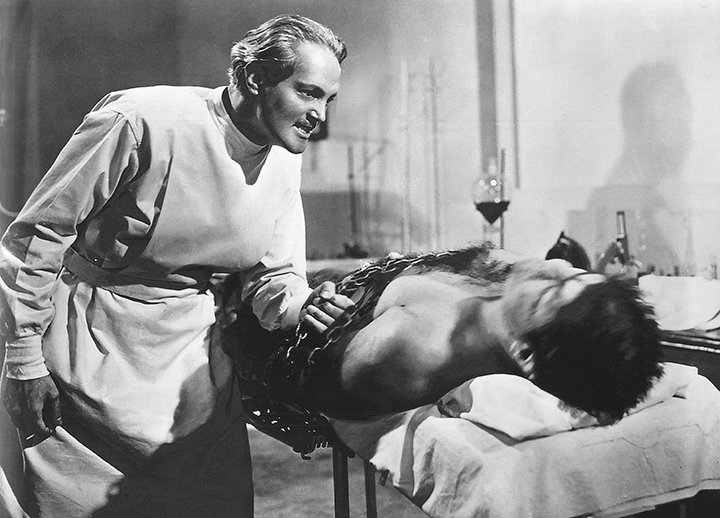
Rene Cardona‘s “Doctor of Doom” has a scattershot premise at best. There’s a masked mad doctor who dresses like a KKK grand wizard — he has everything but the pointy tip at the top of his white hood — and commands a veritable army of suited henchmen. Doc, as I’ll call him, keeps a half-man/half-ape called Gomar (Gerardo Zepeda) behind bars in his cluttered cellar. Gomar is that most ubiquitous of horror-film tropes: an experiment gone wrong.
Doc’s precarious M.O. is to abduct unwilling surgery subjects; perform crazy transplant operations on them; and when they invariably die, dump them unceremoniously in the street. The growing body count triggers a city-wide panic.
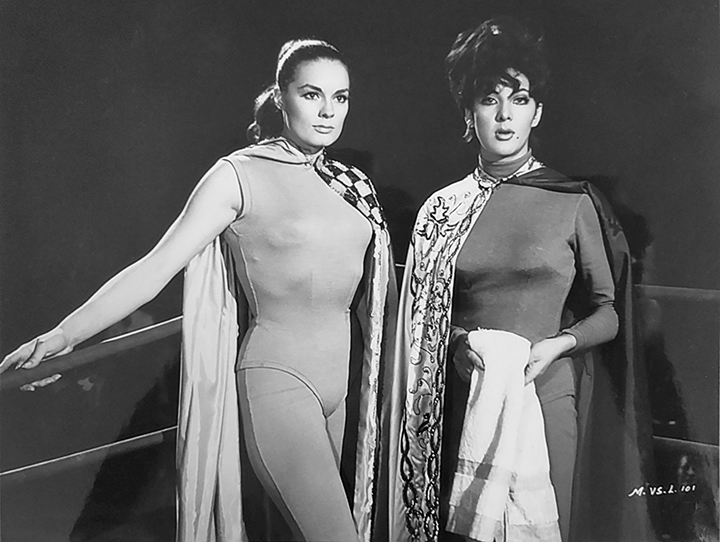
Lab assistant Alice Fontaine (Sonja Infante) wears Dusty Springfield hair and has a famous sister: Gloria Venus. Alice works for kindly Prof. Ruiz (Roberto Canedo) who, in the dubbed U.S. version, is voiced by a fairly decent James Mason imitator. Alice is abducted by Doc’s henchmen and, like many of his victims before her, dies during the unorthodox surgery. Doc concludes that his next subject should be a woman who is physically strong enough to withstand the operation. A woman like … Gloria Venus.
Two detectives investigate Alice’s murder: rising star Mike Henderson (Armando Silvestre) and his short, goofy wingman, Tommy Johnson (Chucho Salinas). American producer K. Gordon Murray, who dubbed a lot of these Mexi-horror films into English, went full gringo on those character names.
Ethics be damned, the detectives start dating Gloria and Rubi. (Golden Rubi coos to Tommy: “You 5-foot lightning bolt!”) The cops outfit the girls with signal wristwatches, so they can be located in case they are abducted. Then, go figure, it’s the boys who fall into a death trap set by Doc — metal spikes on one side, Gomar on the other, as the walls close in — so the girls use the signal watches to track down the cops and rescue them. THIS MOVIE EMPOWERS WOMEN.
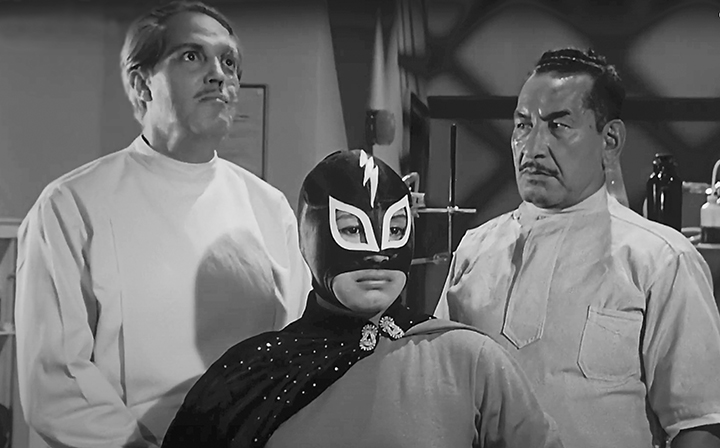
The Doc abducts and operates on another lady wrestler (Carmela Camacho) in order to transform her into … yet another lady wrestler. (Logic is not one of Doc’s strong suits.) The Doc has successfully transplanted Gomar’s “physical strength” into her. (What that means, I don’t know, but you never see Gomar again.) As she awakens from the anesthesia, there’s an echo of the 1931 “Frankenstein.” We see a closeup of her hand moving as Doc bellows, “She’s alive! She’s alive!”
He dresses her in a luchadora costume, mask and all, and proclaims her new name with great ceremony: Vendetta! She has super strength, and he controls her via hypnotic projection — a deadly combination. Doc dresses up kinda like El Santo, mask and all, and poses as Vendetta’s “manager.”
Will Gloria survive the match when Vendetta climbs into the ring with her? I ain’t tellin’.
Sphere of influence
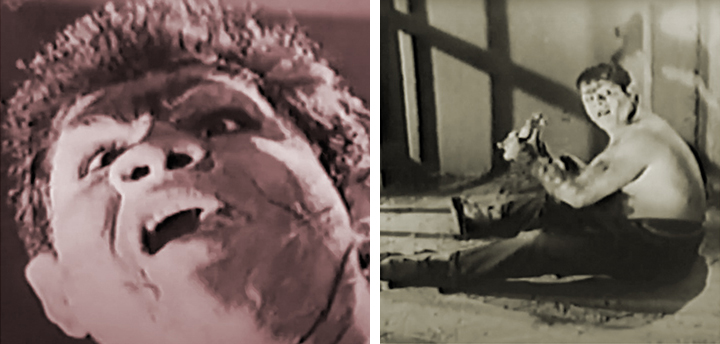
Doc’s lead henchman, Mercado, was played by Jesus Murcielago Velazquez, a veteran wrestler in real life with the imposing physique and craggy features to prove it. (However, Velazquez wears a suit, not tights, in “Doctor of Doom.”) His wrestling career dates back to the 1930s, and he was once Mexico’s middleweight champion. On the screen, Velazquez is a foreboding presence who communicates with an impassive face rather than heaps of dialogue. In this way, you could call him the cinematic descendant of Danny Trejo.
The lady wrestlers seen exercising (and doing light comedy) at the gym behind Gloria and Rubi were all pros who were then well known in Mexico: Romero, Martha “Guera” Salis, Magdalena Caballero, Tona “La Tapatia” and Irma Rodriguez.
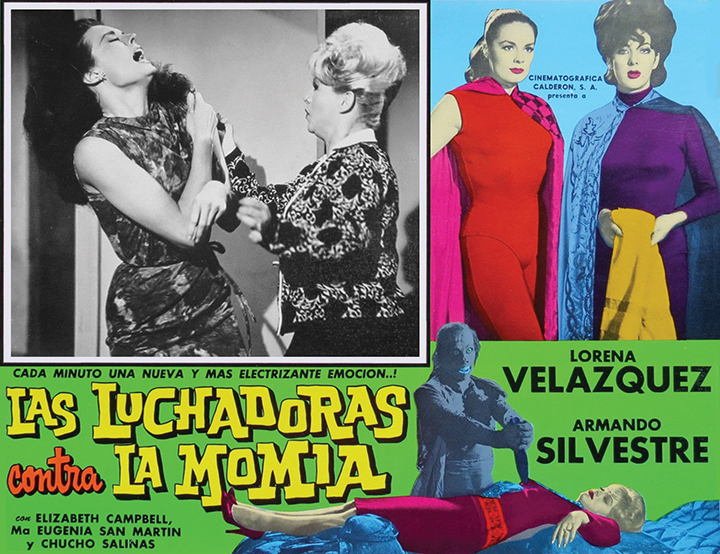
You wouldn’t call “Doctor of Doom” a great horror film like, say, “El Vampiro.” But it’s a neat little monster movie. (I first saw it, and loved it, in 1972, when I was 14.) The funny thing is, though, that this little movie has had quite a sphere of influence. Cardona, for one, kept returning to that well. There were at least three sequels and two semi-remakes, all by Cardona. (I say “at least” because, in the wild and wonderful world of Mexican horror films, you never know what obscure gem might turn up next. It’s like friggin’ Whack-a-Mole.) And there are undeniable echoes in ostensibly unrelated films.
One or both of the luchadoras from “Doctor of Doom” appeared in at least three more films directed by Cardona: “Wrestling Women vs. the Aztec Mummy” (1964), “She-Wolves of the Ring” (1965) and “The Panther Woman” (1967), with Mexican dance legend Tongolele. In the first such sequel (Mexican title “Las Luchadoras Contra la Momia”), the girls encounter the Aztec mummy, himself the “star” of three previous films.
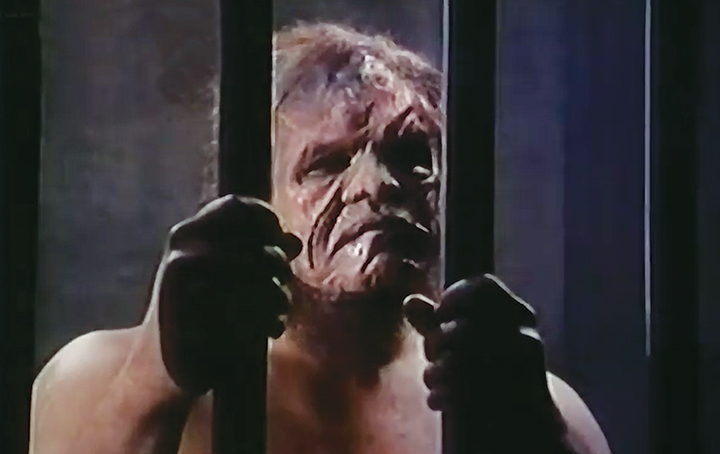
Those films followed the further adventures of the luchadoras, not the Doctor of Doom and his gnarly progeny Gomar. But two color semi-remakes by Cardona, “Las Luchadors Contra el Robot Asesino” and “La Horripilante Bestia Humana” (both 1969), bring us back to that cellar, with the ape man still being played by Zepeda, the original Gomar. (Zepeda, yet another real-life wrestler, made the transition to film acting at the urging of Jesus Murcielago Velazquez.)
Retitled “Night of the Bloody Apes,” “La Horripilante Bestia Humana” became a sensation on the midnight-movie circuit, owing to the doubtful rumor that it includes authentic scenes of open-heart surgery. (I saw it at the TLA Cinema in Philly one Saturday night in the ’80s.)
And to think, it all started with a neat little horror film called “Doctor of Doom” about a mad scientist who followed his dreams.
VIDEOS
Above: A crisp “Doctor of Doom” trailer
Above: “Doctor of Doom,” the movie. Note: Lost Movies, who posted the film, added rock songs to the background. But they did so judiciously. Heck, I’m grateful they posted it.
Above: “Wrestling Women vs. the Aztec Mummy,” the first sequel to “Doctor of Doom.” It, too, has added songs.
Above: “Las Luchadors contra el Robot Asesino” is one of two semi-remakes from Cardona.
Above: This crystal clear “Night of the Bloody Apes” clip has it all: wrestling ladies and a gory operation.